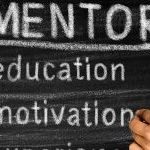Picture a typical office setting. Apart from furniture and office equipment, there’ll be people going about their daily tasks. Speaking of people, are there more older people than young people or is it the other way around? How do baby boomers and millennials work around the generation gap?
As millennials grow in number in the workplace, age gap is a topic that’s becoming more common over the years. Relationship dynamics between colleagues can be complicated, especially when generational gaps come into play. The Intern, which stars Robert De Niro and Anne Hathaway, is a recent movie that effectively highlights the complexity of multigenerational work relationships.
Whether you are an executive, a manager, or just another employee, it pays to address age diversity and how it can affect your company – both positively and negatively.
Benefits
Mentorship
One benefit of age diversity is the prospect of mentorship between older, more tenured employees and younger, less experienced ones. Although the age gap between mentor and pupil need not be multigenerational, this is often an excellent way for one generation to pass their knowledge and wisdom on to the next. Although it might seem that the benefit is purely for the student, there are also several ways that the mentor can profit from this.
A person may take up this position because it gives them satisfaction for doing so. Personal pleasure aside, a person may also doing this to create a legacy for his or her self. Workers who become mentors to the younger and less experienced employees contribute even further to their company’s growth, thereby securing a better future for everyone involved.
A sense of continuity and tradition
A company cannot stay in the past. It must constantly evolve and adapt with the times. For companies that consist only of older workers, the chance of becoming obsolete one day is high. At the other side of the coin, a workforce dominated purely by young professionals leave no room for generational mentoring.
A mixture of both provides balance–a marriage of past and present, leaving a lot of room for future growth. The aforementioned mentorship between coworkers actually forms a cycle. Later, the student may also become a mentor in his or her own right, passing on knowledge to the next generation and so forth.
Skillset diversity
Each generation brings something unique to the table. Younger employees are more tech-savvy than older counterparts, which comes in handy with high-tech business mediums. Social media sites like Facebook, Twitter, and LinkedIn, among others have become incredibly useful – even crucial – among businesses. Knowledge and proficiency in them is now a must.
Older professionals, on the other hand, likely thrived in an environment where email and other technology based communication were not as rampant. Their interpersonal skills have likely been honed greatly over the years as a result. This diversity in skills can be a huge asset to companies, particularly those that cater to multi-generational demographics.
Potential Problemas
Difference in Communication Styles
Each generation has its own preferred communication style. For some, this is almost a cliche. Millennials prefer electronic methods such as texts or instant messaging. Baby boomers and some of the older Generation Xers tend to go for emails or phone calls. If these differences are not well understood by both employees and management, the potential for conflict is high.
Managers can be encouraged to set clear ground rules in order to differentiate what’s acceptable and what’s not. Workers across all age groups can also be encouraged to understand each other’s individual communication preferences, which would also make life a lot easier for everybody in the workplace.
Generational stereotypes
Coming from different times means that people will have different perspectives, values, and ways of getting things done. Another thing that each generation will bring to the table is their stereotypes. Older workers may perceive younger ones as entitled or lazy. In response, younger workers may think of their older counterparts as stubborn and set in their ways.
To bridge the gap, employees need to learn that the responsibility of setting aside preconceived notions is mutual among them. A baseline of respect is where it usually starts. Workers need to go out of their way to learn from one another, rather than stand idly by and judge. The older workers can show their expertise and experience, whilst the younger workers shed some light on technological, pop culture, and demographic trends.
Cultural Expectations
As business evolves, cultural expectation shifts are inevitable. This can be a difficult thing for older workers to adapt to, particularly those who have spent most of their professional lives working a nine to five schedule. Younger managers may even have a different opinion entirely: that spending that much time in the office pales in comparison to the quality of the output of one’s work.
There is a balance between work and life that millennials crave, but on the flip side, it may be entirely lost on their older bosses, who were likely expected to sacrifice and devote a lot of time for work. Leaders must approach this issue in a way that individuals can work in a specific style that suits them best, whilst acknowledging their efforts all the same.
Conclusion
With so many unique benefits to reap and tricky situations to navigate, age diversity is clearly not something to scoff at. Learning to make the most out of a multigenerational office, whilst avoiding the pitfalls is paramount in order to achieve harmony and the highest success possible in the office. Perhaps now picturing a typical office will have a balanced mixture of young and older workers together.











